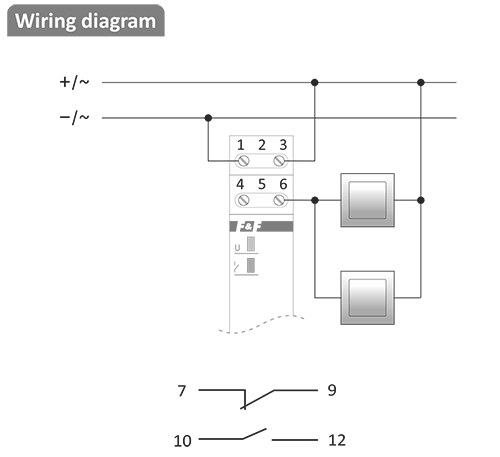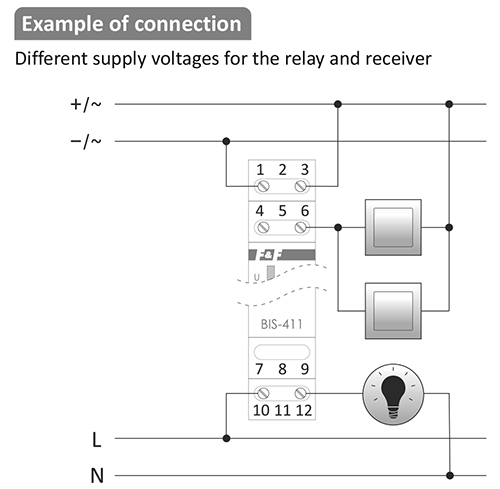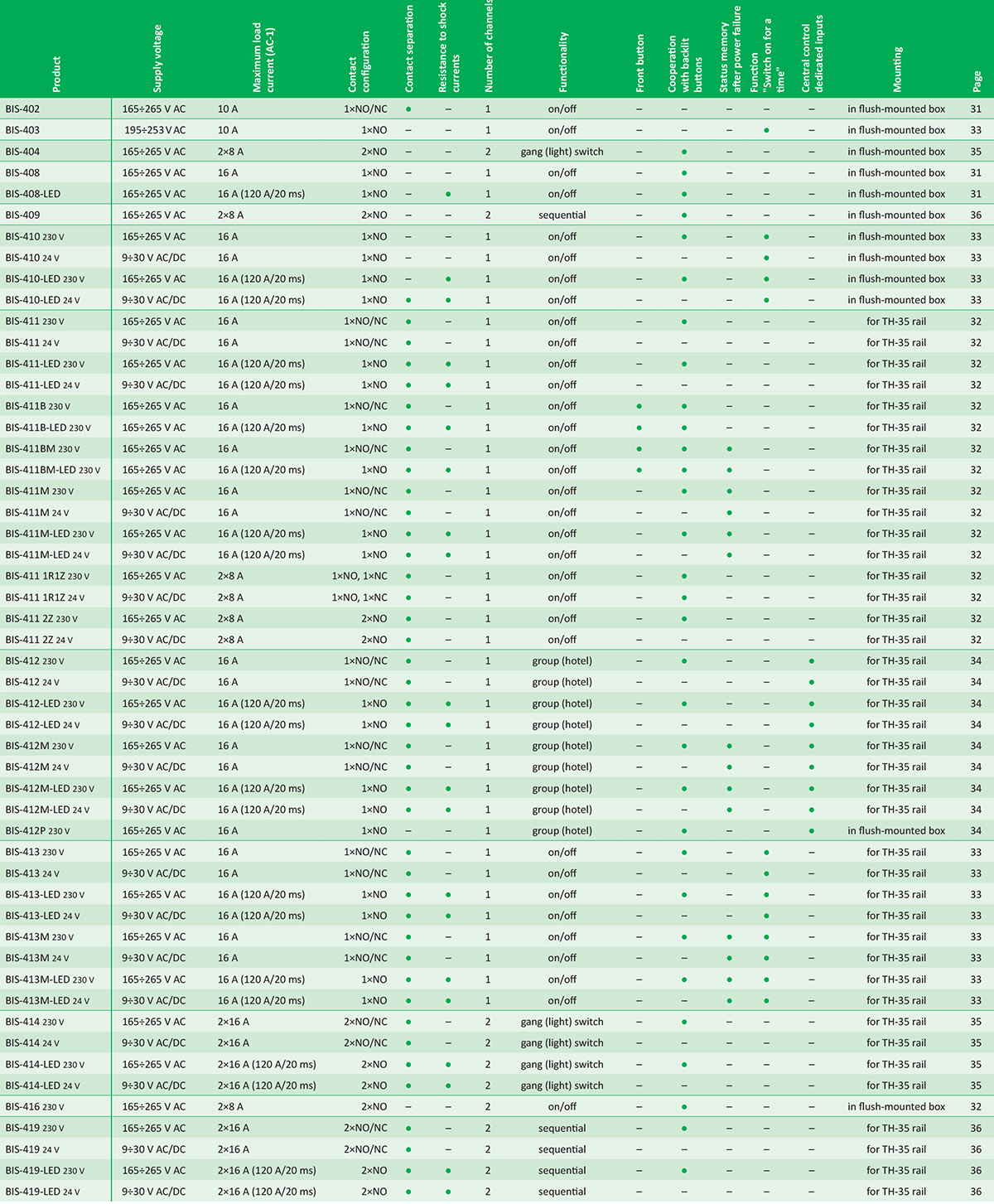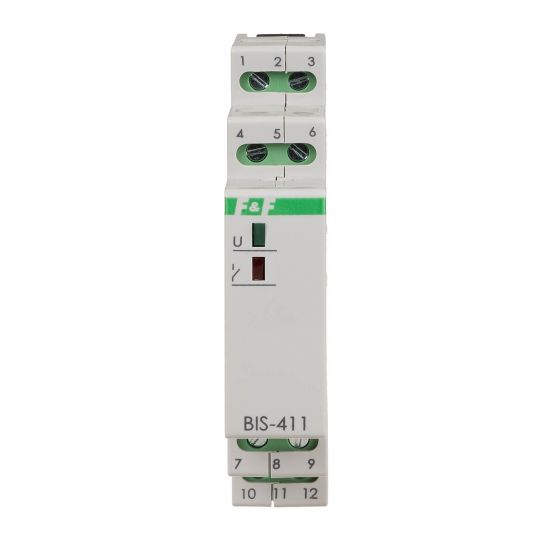





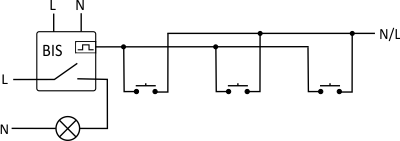
Functioning
The receiver is switched on after a current pulse caused by pressing any momentary (bell) button connected to the relay. After the next pulse, the receiver will be switched off. The relay does not have a "memory" of the contact position, which means in the event of a power failure and its subsequent return, the relay contact will be set to "off". This prevents the controlled receivers from being switched on automatically without supervision after a prolonged power failure.
Attention!
BIS-411 1R1Z can’t work with backlit buttons.
The maximum total backlight current of all connected buttons must not exceed 5 mA.
Power table

The above data are indicative and will depend to a large extent on the design of a specific receiver (especially for LED bulbs, energy saving lamps, electronic transformers and pulse power supplies), switching frequency and working conditions.
